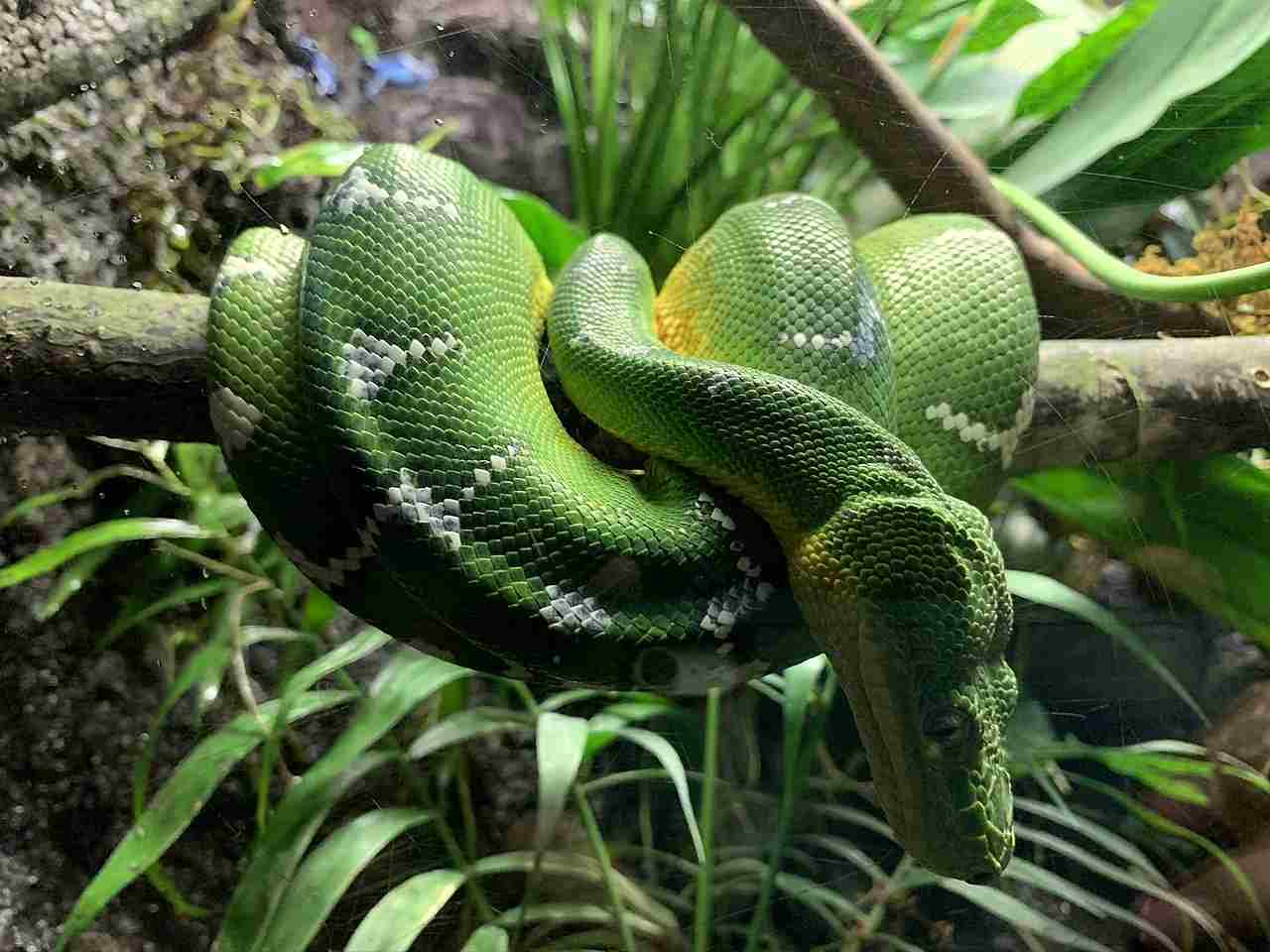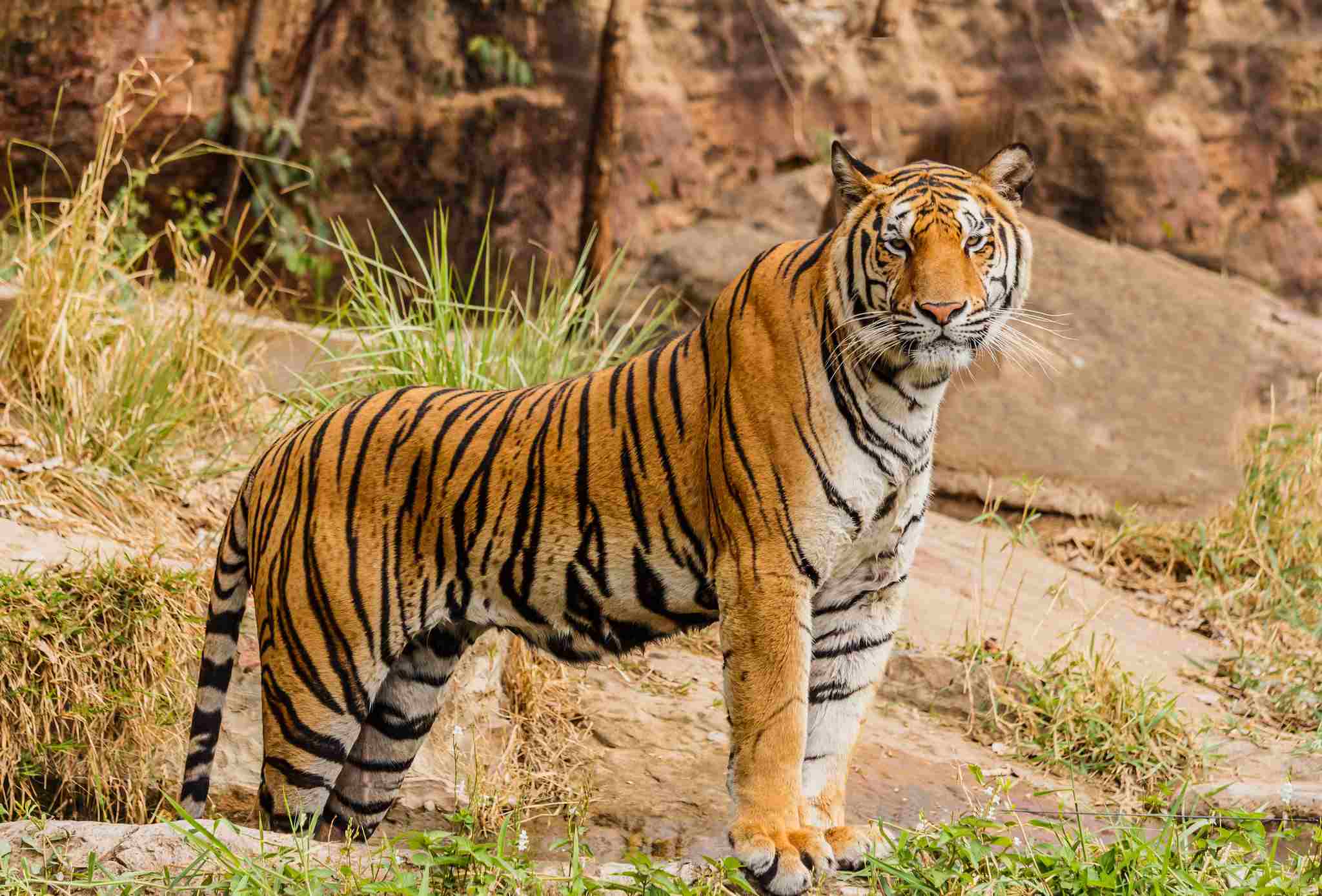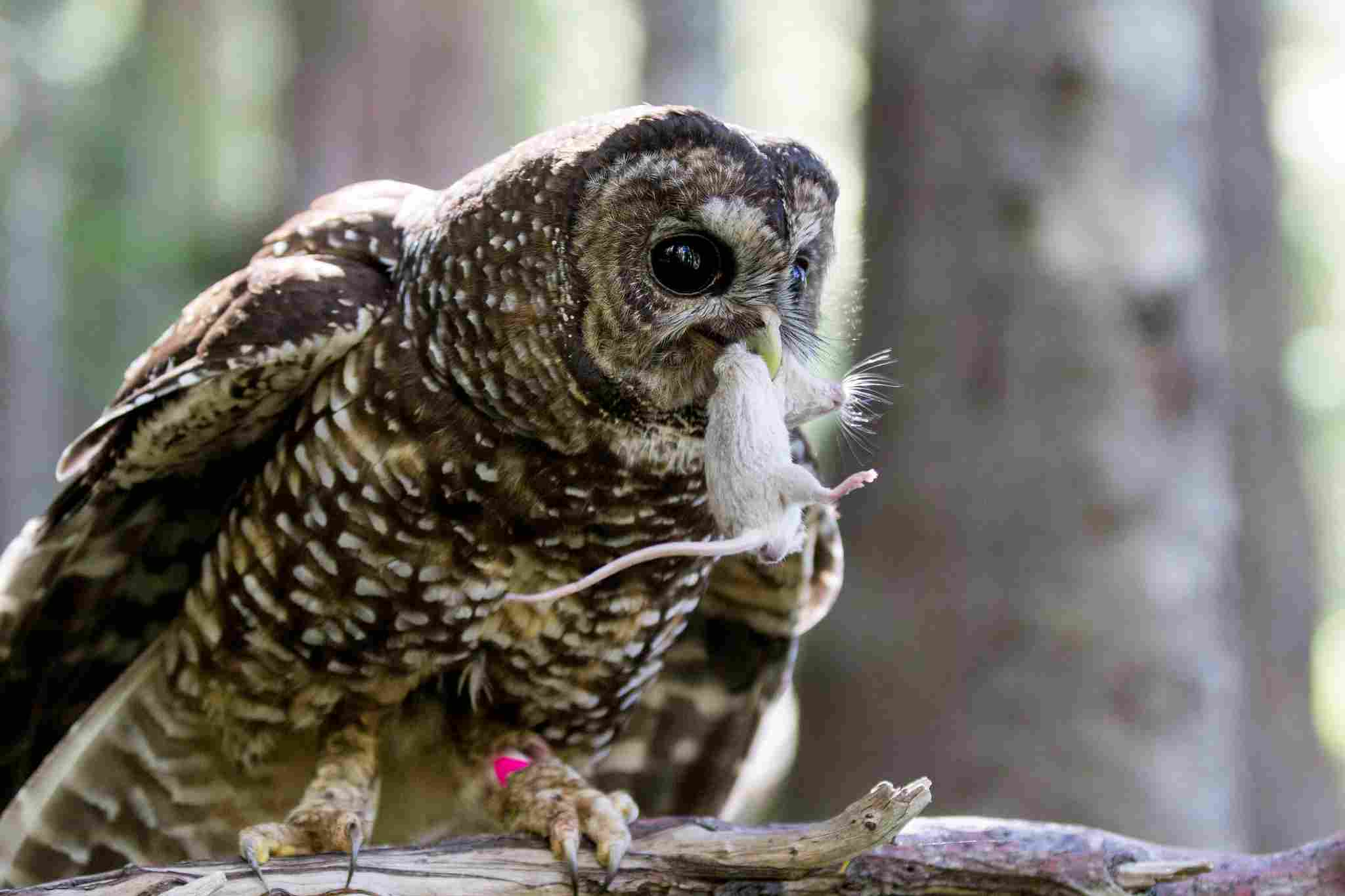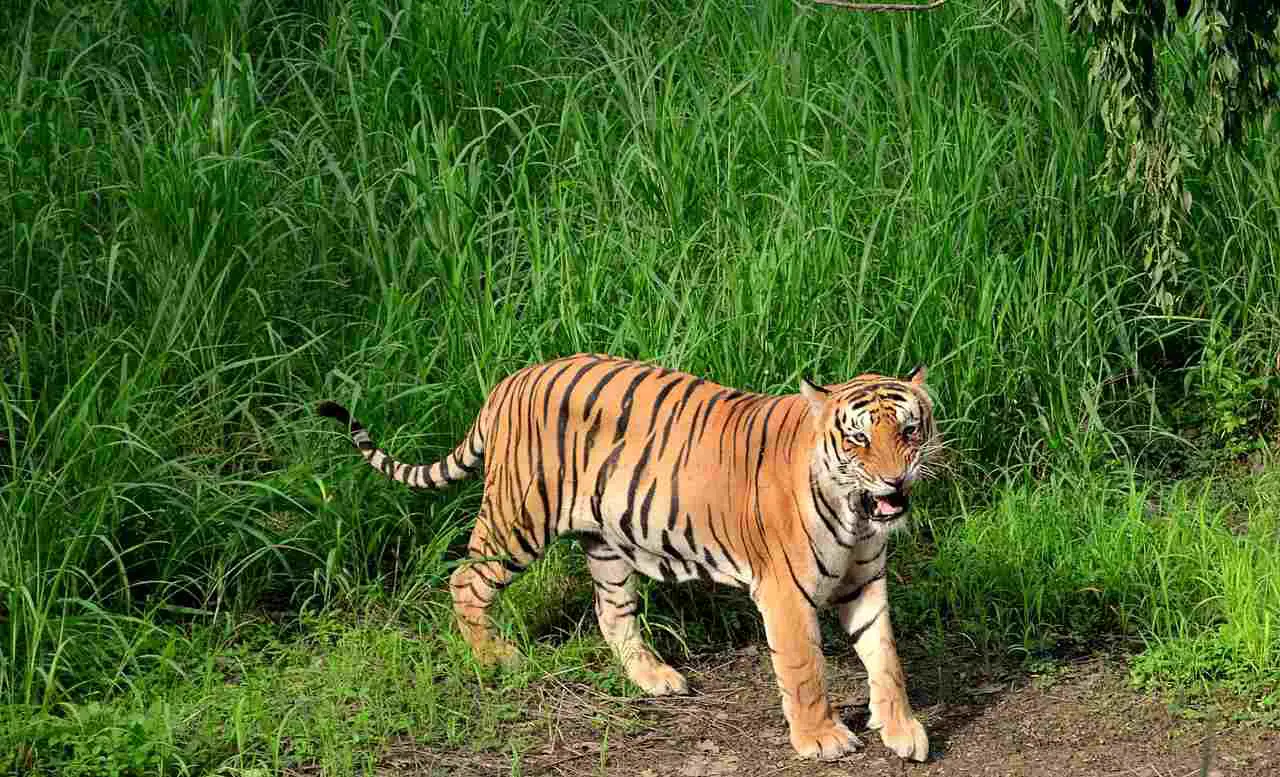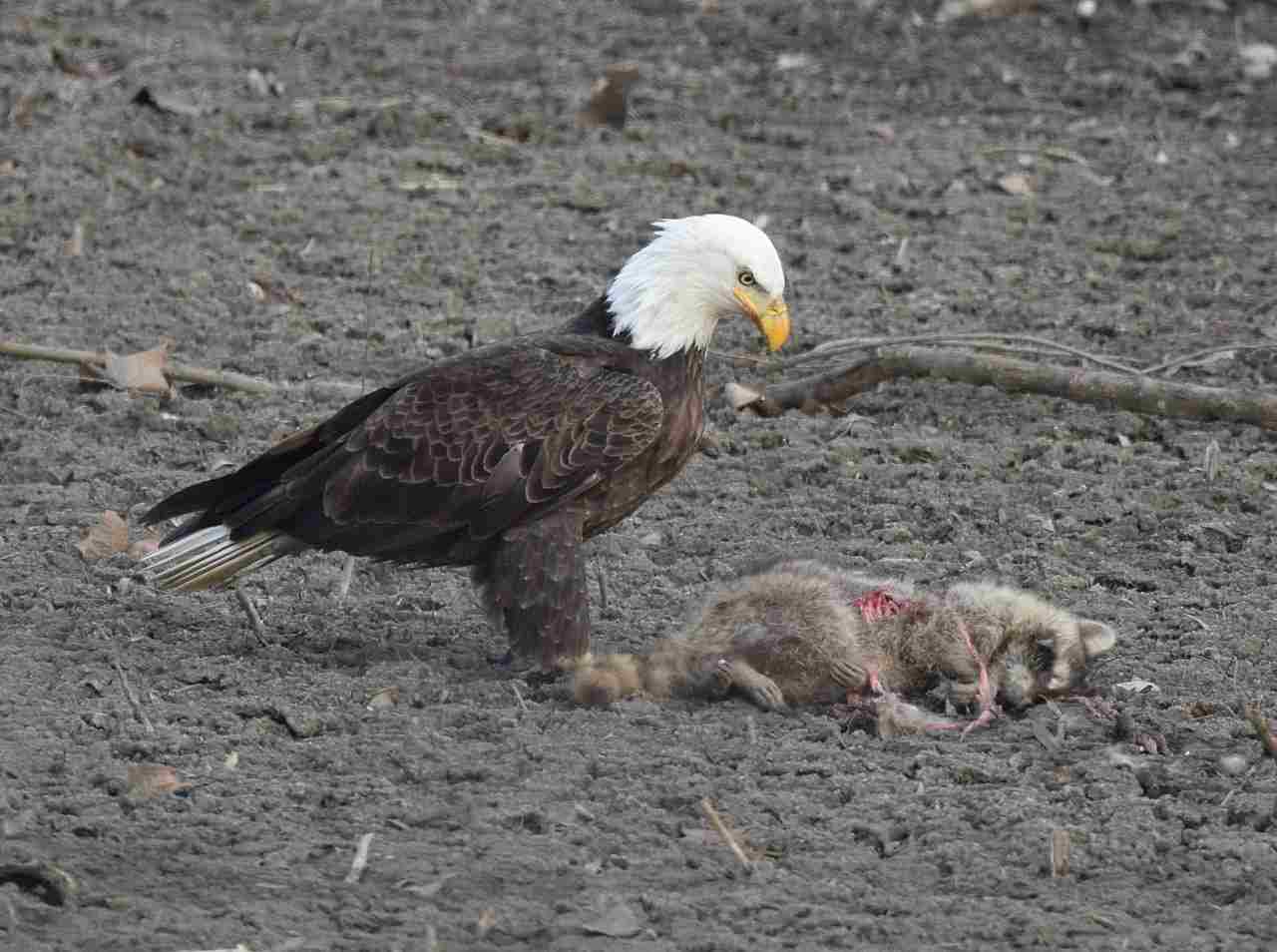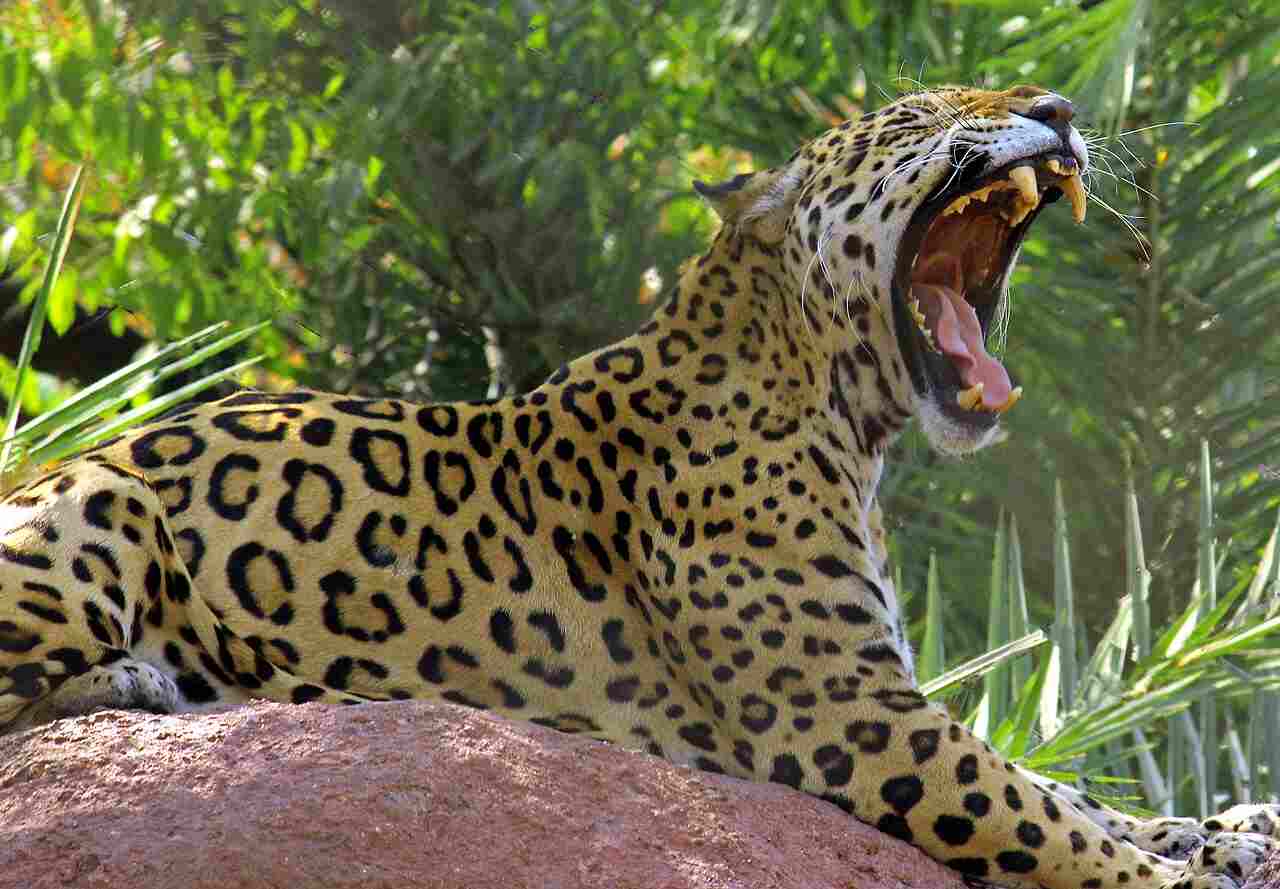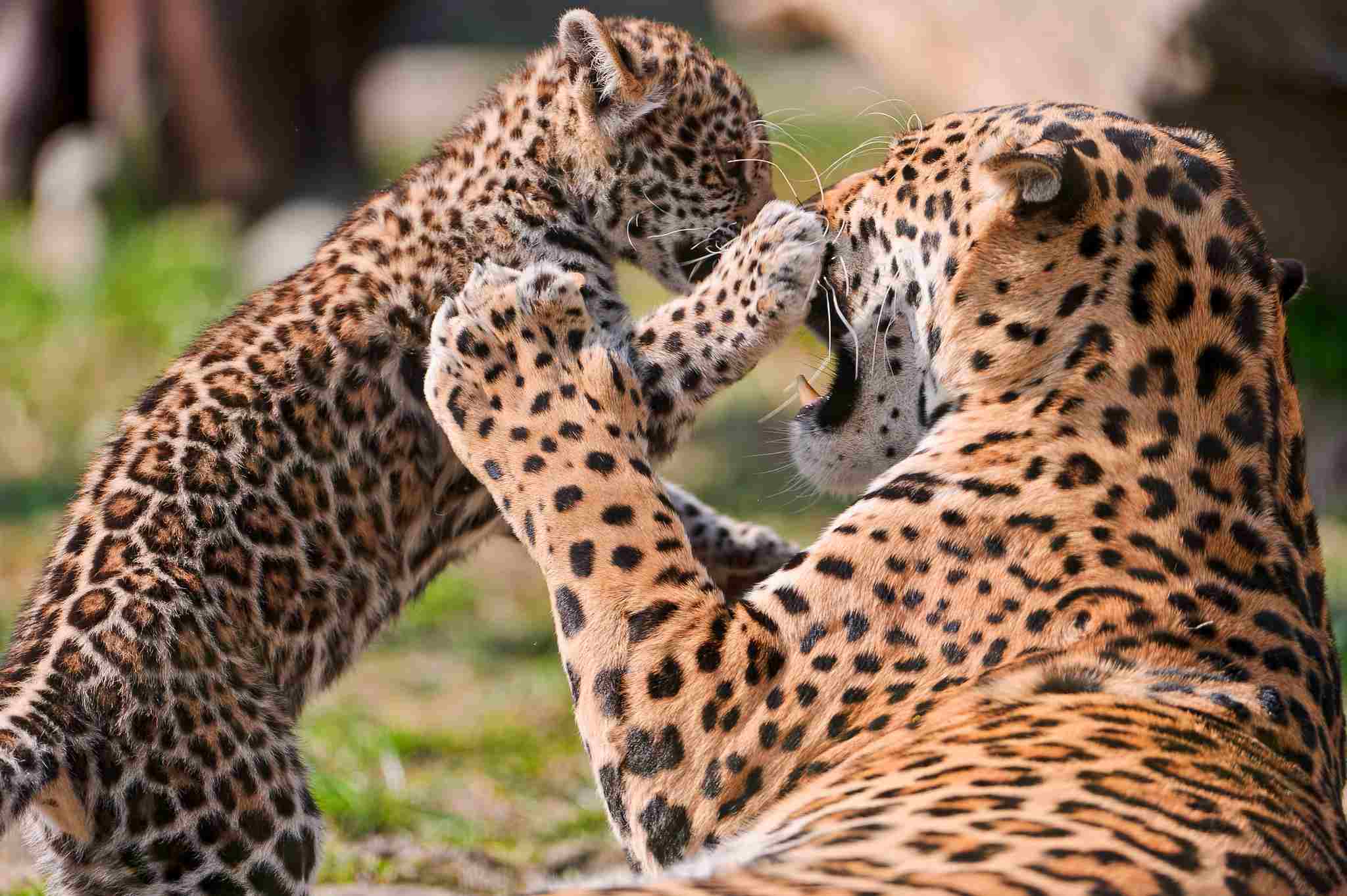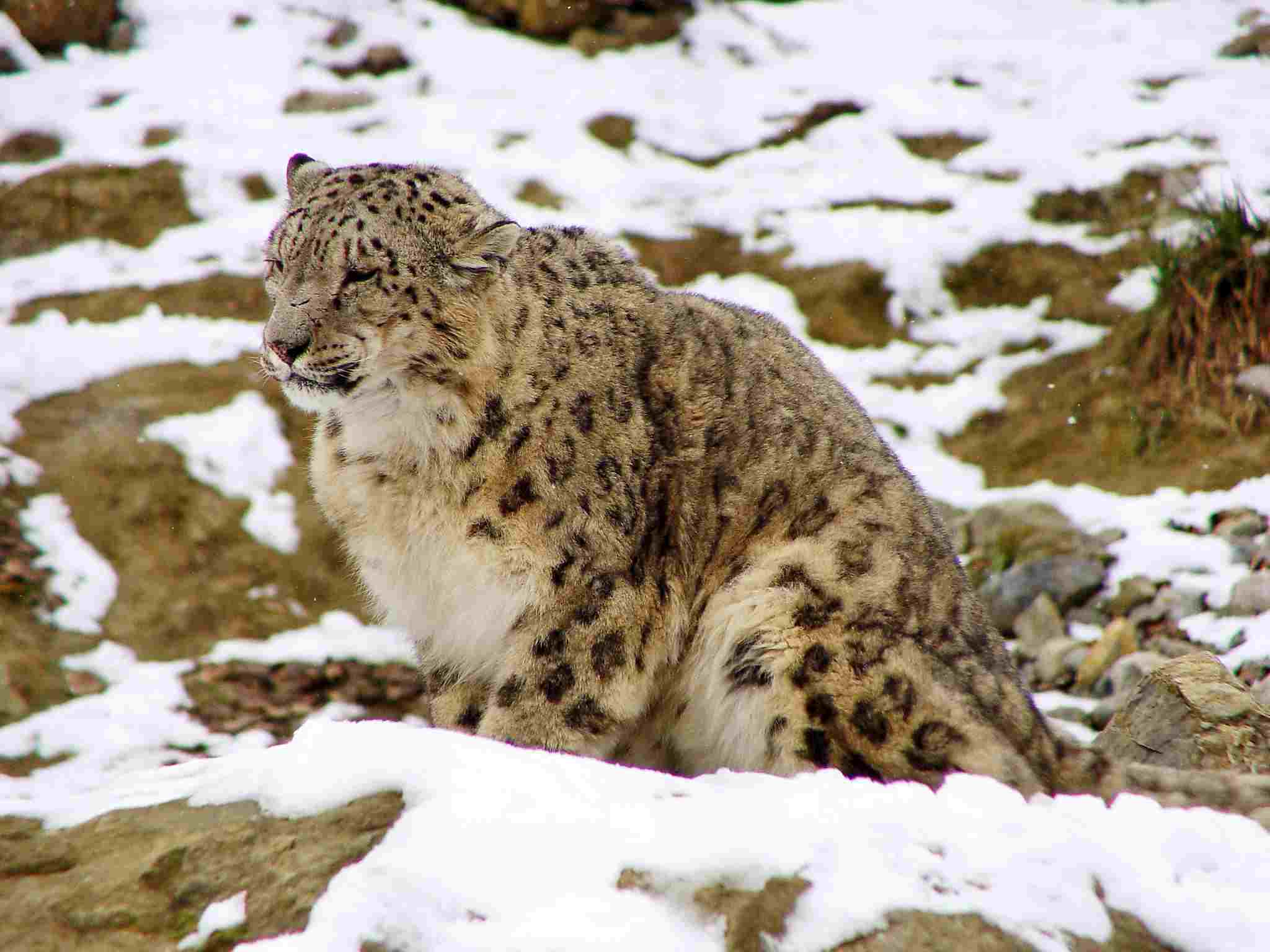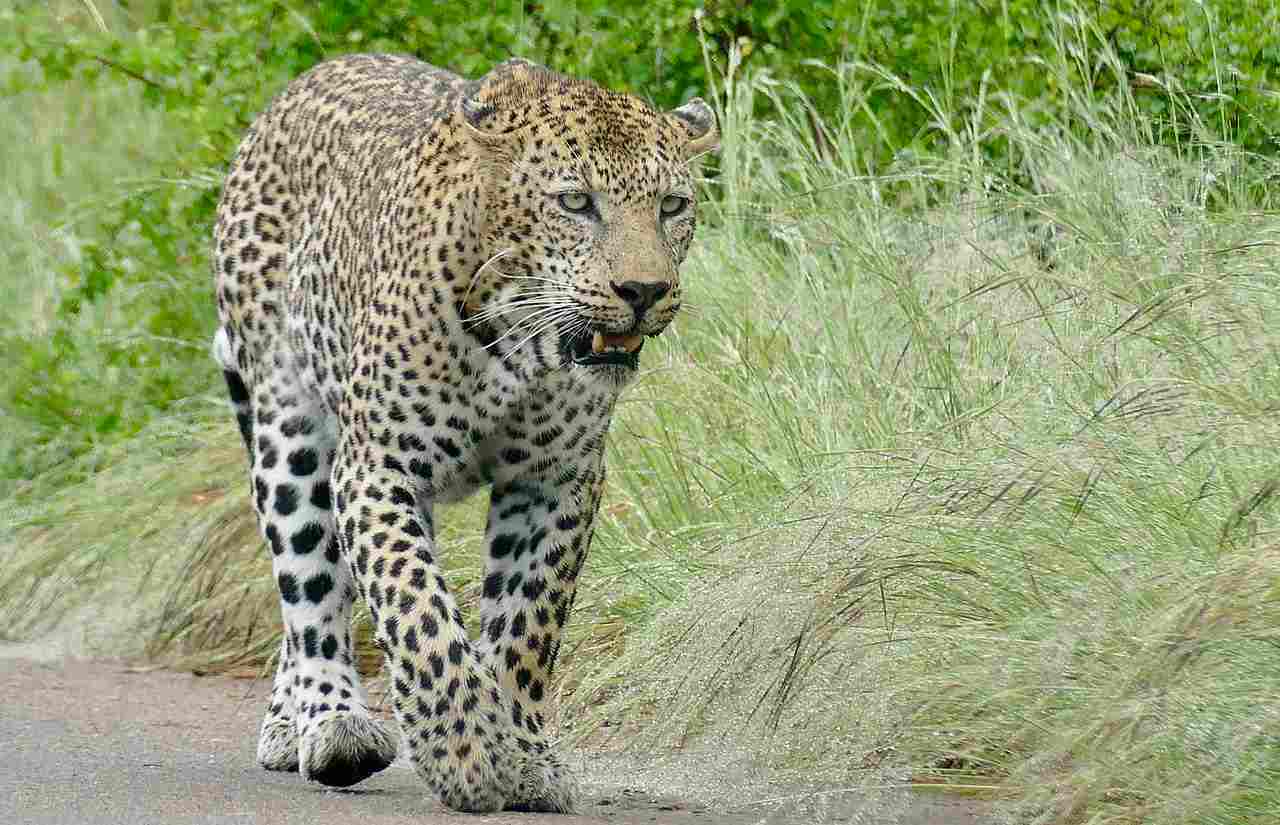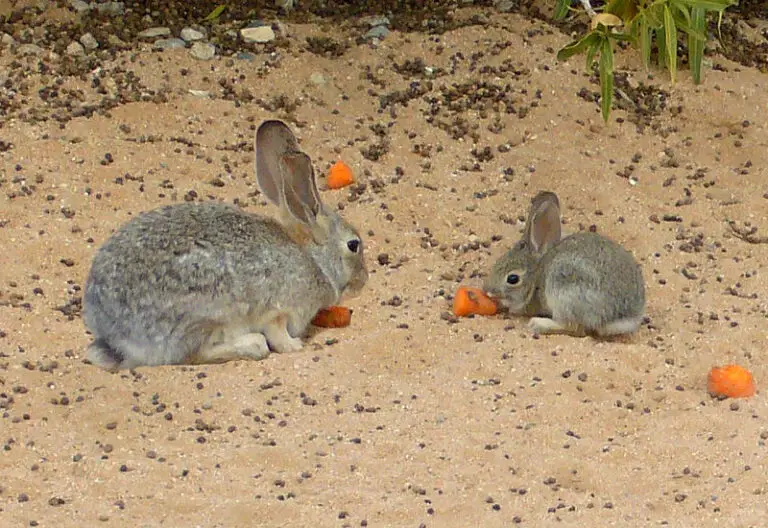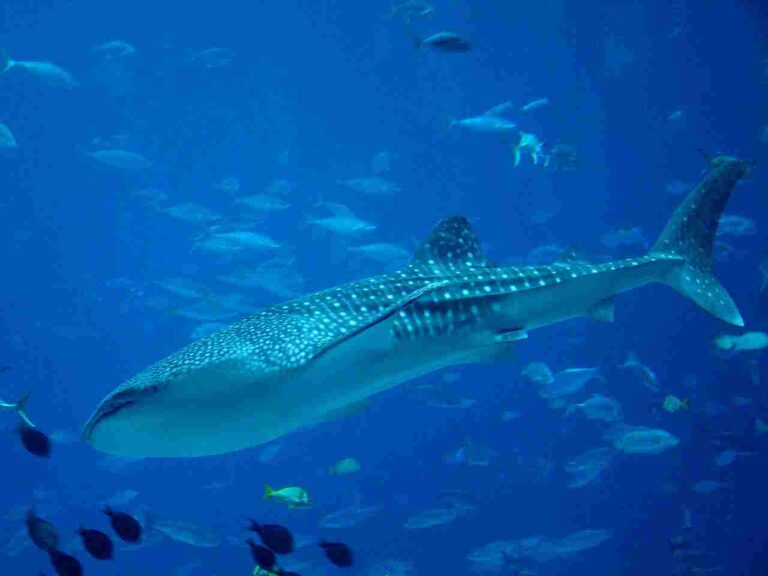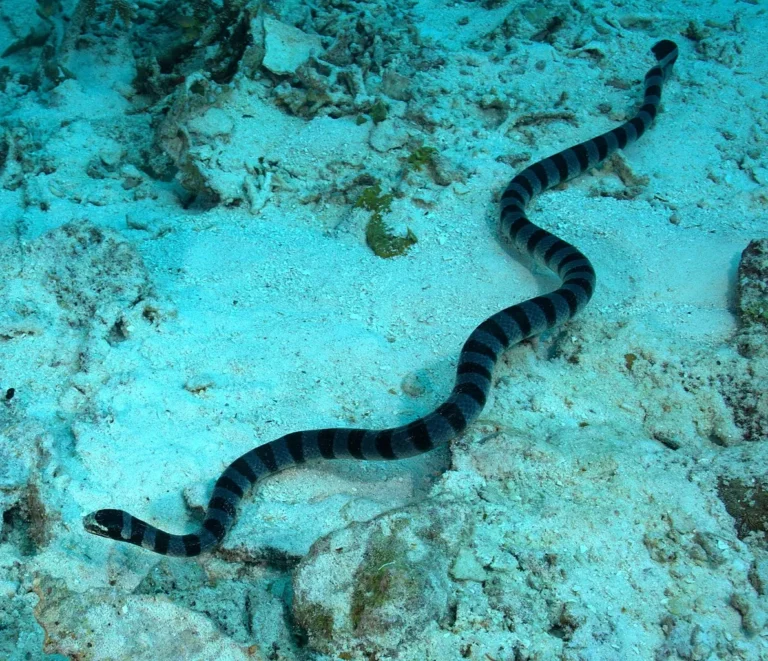9+ Predators In The Tropical Rainforest Ecosystem
Examples of predators in the tropical rainforest ecosystem are leopards, tigers, jaguars, African golden cats, ocelots, tree boas, green anacondas, frogs, harpy eagles, hawks, and owls. These predators play crucial roles in maintaining the ecological balance by controlling prey populations. However, they face threats such as habitat loss, poaching, and human encroachment. Conservation efforts focus on habitat protection, anti-poaching measures, and community education to ensure the survival of these vital species in the tropical rainforest ecosystem.
1. Leopard
Leopards (Panthera pardus) are one of the most adaptable predators in tropical rainforest ecosystems, renowned for their stealth and agility. With their distinct rosette-patterned coats, these big cats can easily blend into the dense foliage of the forest, making them efficient ambush predators. They primarily hunt during the twilight hours of dawn and dusk, taking advantage of low light conditions to stalk prey silently. Leopards’ diet is highly varied, including deer, monkeys, rodents, and birds, which allows them to thrive in a wide range of habitats across Africa and Asia. Their ability to climb trees also helps them evade larger predators and stash their kills away from scavengers.
In addition to their hunting prowess, leopards play a crucial role in maintaining the balance of the tropical rainforest ecosystem by controlling the populations of various prey species. They are solitary animals, with each individual establishing a territory marked by scent and scratch marks on trees. This territorial behavior helps prevent overcrowding and ensures a steady supply of resources. However, habitat loss and human-wildlife conflict have posed significant threats to leopard populations, making conservation efforts essential to their survival. Efforts to protect leopards and their habitats contribute to preserving the intricate biodiversity of tropical rainforests.
2. Tiger
Tigers (Panthera tigris) are the largest of the big cats and are found in the tropical rainforests of Southeast Asia. Known for their striking orange and black striped coats, these majestic predators are highly territorial and often require large areas of forest to roam. Tigers are powerful and versatile hunters, preying on a variety of animals, including deer, wild boar, and sometimes even larger prey like buffalo. They are also strong swimmers, which helps them traverse rivers and other waterways in their forest habitats. The tiger’s roar can be heard over long distances, serving as a communication tool to establish territory or find mates.
The tiger’s presence in the rainforest is crucial for maintaining ecological balance, as they help control populations of herbivores, preventing overgrazing and subsequent habitat degradation. Despite their vital role, tigers face severe threats from poaching and habitat loss due to deforestation and human encroachment. Conservation programs aimed at protecting tigers and their habitats are essential to ensure their survival. These programs often include anti-poaching measures, community education, and the establishment of protected reserves, helping to secure the future of this iconic predator.
3. Jaguar
The jaguar (Panthera onca) is the third-largest big cat species and the only Panthera species native to the Americas. Found primarily in Central and South American tropical rainforests, jaguars are known for their powerful build and beautiful rosette-patterned coats. Unlike most cats, jaguars are strong swimmers and often hunt near or in water, preying on a variety of species, including fish, turtles, caimans, and larger mammals like capybaras. They are also adept climbers, which allows them to navigate the dense rainforest canopy and hunt arboreal animals like monkeys.
Jaguars play a vital role in maintaining the health of rainforest ecosystems by controlling prey populations and helping to maintain biodiversity. However, they face significant threats from habitat loss due to deforestation and illegal hunting, both for their pelts and in retaliation for livestock predation. Conservation efforts focus on preserving jaguar habitats and establishing wildlife corridors that allow them to move safely across fragmented landscapes. These initiatives are critical for ensuring the survival of jaguars and preserving the ecological integrity of tropical rainforests.
4. African Golden Cat
The African golden cat (Caracal aurata) is a lesser-known predator found in the tropical rainforests of Central and West Africa. This elusive feline is closely related to the caracal and serval, and is characterized by its reddish-brown to grayish coat, with some individuals exhibiting spots or stripes. The African golden cat is a solitary and primarily nocturnal hunter, preying on a range of animals, including rodents, birds, and small primates. Its stealth and agility allow it to navigate the dense forest underbrush with ease, making it an effective predator in its habitat.
The African golden cat’s role in the rainforest ecosystem involves controlling small mammal populations and contributing to the overall balance of the food web. Despite its importance, this species is relatively understudied, and its exact population numbers are not well-documented. The primary threats to the African golden cat include habitat loss due to deforestation and human encroachment, as well as illegal hunting. Conservation efforts for this species require a better understanding of its ecology and the establishment of protected areas to ensure its continued survival in the tropical rainforest ecosystem.
5. Ocelot
The ocelot (Leopardus pardalis) is a medium-sized wild cat native to the tropical rainforests of Central and South America. With its striking coat adorned with a complex pattern of rosettes, stripes, and spots, the ocelot is a visually stunning predator. These cats are primarily nocturnal and highly adaptable, preying on a variety of animals, including small mammals, birds, reptiles, and insects. Ocelots are known for their agility and climbing skills, allowing them to hunt both on the forest floor and in the canopy. They often use their stealth and camouflage to stalk and ambush their prey.
Ocelots play an essential role in maintaining the ecological balance of tropical rainforests by controlling populations of smaller animals. However, they face significant threats from habitat loss due to deforestation and human activities, such as farming and logging. Additionally, they have been hunted for their beautiful pelts in the past, leading to significant declines in their populations. Conservation efforts focus on protecting ocelot habitats and creating wildlife corridors that allow them to move freely between fragmented forest areas. These initiatives are vital to ensure the survival of the ocelot and the preservation of the biodiversity within tropical rainforests.
6. Tree Boa
The tree boa (Corallus spp.) is a group of non-venomous snakes found in the tropical rainforests of Central and South America. These snakes are highly arboreal, spending most of their time in the forest canopy, where they use their prehensile tails to navigate branches with ease. Tree boas are known for their vibrant colors, which can range from green to red and yellow, depending on the species. They are primarily nocturnal and feed on a diet of birds, small mammals, and sometimes reptiles. Their ambush-hunting strategy involves coiling around branches and striking quickly to capture prey.
Tree boas contribute to the tropical rainforest ecosystem by controlling bird and small mammal populations. Despite their adaptability to various habitats within the rainforest, these snakes face threats from habitat loss due to deforestation and human activities. Additionally, they are sometimes hunted for the exotic pet trade, which can put pressure on wild populations. Conservation efforts for tree boas include protecting their habitats and regulating the trade of exotic pets to ensure that these snakes can continue to thrive in the rainforest environment.
7. Green Anaconda
The green anaconda (Eunectes murinus) is one of the largest snakes in the world, native to the tropical rainforests and wetlands of South America. These massive constrictors can grow to impressive lengths, with some individuals exceeding 20 feet. Green anacondas are semi-aquatic, spending a significant amount of time in swamps, rivers, and marshes, where they can use their size and strength to ambush prey. Their diet includes a variety of animals, such as capybaras, caimans, and even larger mammals like deer. Green anacondas kill their prey by constriction, wrapping their powerful bodies around their victims until they suffocate.
The green anaconda plays a significant role in the tropical rainforest ecosystem by controlling populations of larger prey species. Despite their size and strength, these snakes face threats from habitat loss due to deforestation and human encroachment, as well as from illegal hunting and the exotic pet trade. Conservation efforts focus on protecting their habitats and raising awareness about their ecological importance. Given their large size, green anacondas require substantial territory, making the preservation of wetland and rainforest areas crucial for their survival.
8. Frog
Frogs are a diverse group of amphibians found throughout the tropical rainforests, with a wide range of species displaying various colors and patterns. These adaptable creatures play a vital role in the rainforest ecosystem, serving as both predator and prey. Frogs feed on insects, small invertebrates, and occasionally smaller frogs, helping to control pest populations and maintain ecological balance. Additionally, frogs are an important food source for a variety of predators, including birds, snakes, and mammals. Their distinctive calls are a key aspect of the rainforest’s acoustic environment, contributing to the biodiversity of these unique habitats.
Despite their importance, frogs face significant threats from habitat loss, climate change, pollution, and the spread of diseases such as chytridiomycosis, which has devastated amphibian populations worldwide. Conservation efforts to protect frogs in tropical rainforests focus on preserving their habitats, reducing pollution, and monitoring for disease outbreaks. By maintaining healthy frog populations, the overall health and stability of the rainforest ecosystem are supported, ensuring a vibrant and diverse environment for all species.
9. Harpy Eagle
The harpy eagle (Harpia harpyja) is one of the largest and most powerful eagles in the world, inhabiting the tropical rainforests of Central and South America. With its striking appearance, including a distinctive double crest and large talons, the harpy eagle is a formidable predator. This raptor primarily preys on arboreal animals such as monkeys, sloths, and large birds, often hunting from high perches in the canopy. The harpy eagle’s exceptional strength and agility allow it to navigate the dense forest environment and capture prey with precision.
As a top predator, the harpy eagle plays a crucial role in maintaining the balance of the tropical rainforest ecosystem by regulating populations of arboreal prey species. However, the harpy eagle faces significant threats from habitat loss due to deforestation and human encroachment. These pressures can lead to population declines and fragmentation, making conservation efforts critical to the species’ survival. Conservation initiatives often focus on protecting the harpy eagle’s habitats, creating reserves, and raising awareness about the importance of these magnificent birds in maintaining the ecological integrity of tropical rainforests.
10. Hawk
Hawks are a diverse group of birds of prey found in various regions, including tropical rainforests. These agile and keen-sighted raptors play a critical role in the ecosystem by hunting a variety of prey, such as small mammals, birds, reptiles, and insects. In tropical rainforests, hawks can often be seen perched on high branches, scanning for movement below. When they spot prey, they use their speed and agility to swoop down and capture their targets with sharp talons. Some common hawks found in rainforests include the broad-winged hawk and the black-collared hawk.
Hawks contribute to maintaining ecological balance in tropical rainforests by controlling populations of smaller animals, which helps prevent overpopulation and ecosystem instability. However, these raptors face threats from habitat loss due to deforestation and other human activities, as well as from climate change. Conservation efforts for hawks in tropical rainforests focus on preserving their habitats and ensuring that they have access to sufficient prey. Additionally, educating local communities about the importance of hawks in the ecosystem can foster greater appreciation and support for their conservation.
11. Owl
Owls are nocturnal birds of prey that play a vital role in the tropical rainforest ecosystem. With their keen hearing and silent flight, owls are highly effective predators, preying on small mammals, birds, reptiles, and insects. In tropical rainforests, owls are often found hunting at night, using their large eyes to detect movement in low-light conditions. Some common rainforest owls include the spectacled owl and the mottled owl, both known for their distinctive calls that add to the nighttime sounds of the forest.
Owls contribute to the balance of the rainforest ecosystem by controlling populations of small mammals and other prey, which helps maintain the health of the forest environment. Despite their adaptability, owls face threats from habitat loss, deforestation, and human disturbances. Conservation efforts to protect owls in tropical rainforests include preserving their habitats, creating protected areas, and raising awareness about the importance of owls in the ecosystem. By ensuring the survival of owls, the intricate balance of the tropical rainforest can be maintained, supporting a rich and diverse range of species.
*Summary
-
Leopard
-
Agile ambush predator with rosette-patterned coat
-
Climbs trees, hunts varied prey, maintains ecological balance
-
Threats: Habitat loss, human-wildlife conflict
-
Conservation: Anti-poaching, protected areas, community education
-
-
Tiger
-
Largest big cat, strong swimmer, highly territorial
-
Hunts larger prey, maintains balance of prey populations
-
Threats: Poaching, habitat loss, human encroachment
-
Conservation: Anti-poaching, community education, protected reserves
-
-
Jaguar
-
Third-largest big cat, adept climber, strong swimmer
-
Hunts various prey, including larger animals like capybaras
-
Threats: Habitat loss, illegal hunting, livestock predation
-
Conservation: Wildlife corridors, habitat protection
-
-
African Golden Cat
-
Elusive, nocturnal hunter with reddish-brown to grayish coat
-
Preys on small mammals, birds, and primates
-
Threats: Habitat loss, illegal hunting
-
Conservation: Habitat protection, species studies, protection measures
-
-
Ocelot
-
Medium-sized wild cat with a striking coat
-
Preys on small mammals, birds, reptiles, and insects
-
Threats: Habitat loss, hunting for pelts, deforestation
-
Conservation: Habitat protection, wildlife corridors
-
-
Tree Boa
-
Non-venomous snake with a prehensile tail, arboreal
-
Hunts birds, small mammals, uses ambush tactics
-
Threats: Habitat loss, exotic pet trade
-
Conservation: Habitat protection, exotic pet trade regulation
-
-
Green Anaconda
-
One of the largest snakes, semi-aquatic
-
Hunts larger prey, uses constriction
-
Threats: Habitat loss, human encroachment, exotic pet trade
-
Conservation: Wetland and rainforest preservation
-
-
Frog
-
Diverse group of amphibians with a wide range of colors
-
Predators and prey, contribute to ecological balance
-
Threats: Habitat loss, pollution, diseases
-
Conservation: Habitat preservation, disease monitoring
-
-
Harpy Eagle
-
One of the largest eagles, hunts arboreal prey like monkeys
-
Helps maintain ecological balance
-
Threats: Habitat loss, deforestation, human encroachment
-
Conservation: Protected areas, habitat preservation, awareness
-
-
Hawk
-
Agile raptors, hunt small mammals, birds, reptiles
-
Contribute to ecological balance
-
Threats: Habitat loss, deforestation, climate change
-
Conservation: Habitat protection, community education
-
-
Owl
-
Nocturnal birds of prey, keen hearing, silent flight
-
Contribute to ecosystem balance, hunt at night
-
Threats: Habitat loss, human disturbances
-
Conservation: Habitat preservation, protected areas
-
| Predator |
Characteristics and Conservation
|
| Leopard |
Agile ambush predator; climbs trees; threats include habitat loss; conservation through anti-poaching and protected areas
|
| Tiger |
Largest big cat; strong swimmer; threats include poaching and habitat loss; conservation via protected reserves and community education
|
| Jaguar |
Strong swimmer; hunts larger prey; threats include illegal hunting; conservation through wildlife corridors and habitat protection
|
| African Golden Cat |
Elusive, nocturnal; threats include habitat loss and illegal hunting; conservation through habitat protection
|
| Ocelot |
Medium-sized wild cat; hunts small mammals; threats include habitat loss and hunting for pelts; conservation through habitat protection
|
| Tree Boa |
Non-venomous snake; arboreal; threats include habitat loss and exotic pet trade; conservation through habitat protection
|
| Green Anaconda |
Large snake; semi-aquatic; threats include habitat loss and exotic pet trade; conservation through wetland preservation
|
| Frog |
Diverse amphibians; threats include habitat loss and diseases; conservation through habitat preservation and disease monitoring
|
| Harpy Eagle |
Large eagle; threats include habitat loss; conservation through protected areas and habitat preservation
|
| Hawk |
Agile raptors; threats include habitat loss and deforestation; conservation through habitat protection and community education
|
| Owl |
Nocturnal raptors; threats include habitat loss and human disturbances; conservation through protected areas
|
